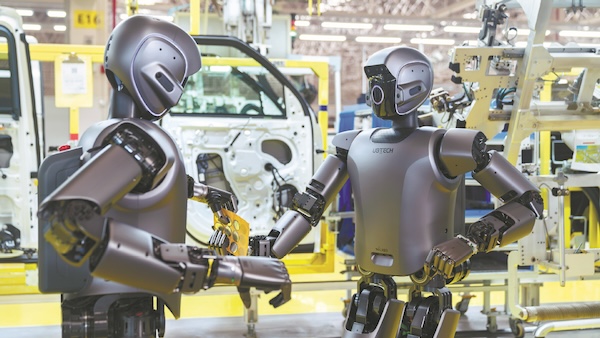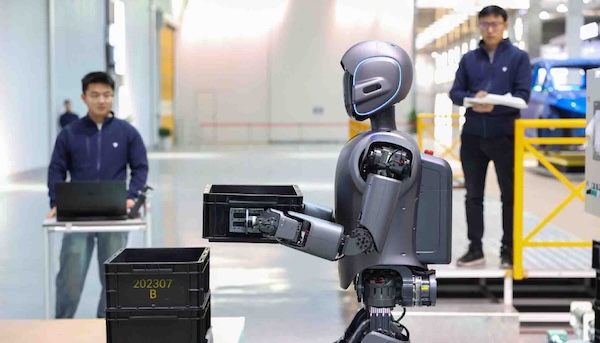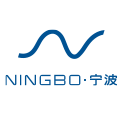Humanoids in factories share knowledge as they learn

UBTech Robotics' Walker S1 humanoid robots work at Chinese automaker Geely's Zeekr 5G smart factory in Ningbo, Zhejiang province, in March. CHINA DAILY
In the sprawling assembly lines of Chinese automaker Geely's Zeekr 5G smart factory in Ningbo, Zhejiang province, a new generation of workers is quietly revolutionizing manufacturing.
Standing 172 centimeters tall with a sleek silver exterior, UBTech Robotics' Walker S1 humanoid robots glide between workstations, sorting materials, transporting cargo and installing components with precision. What once belonged to sci-fi movies is now reality, as humanoid robots are no longer lab curiosities, but full-fledged "employees" in China's smart factories.
The journey of UBTech's humanoids began long before their industrial debut. In 2016, the company's robots dazzled audiences during China's Spring Festival Gala, showcasing acrobatic dances. Later, they served as museum guides and exhibition hosts. Last month, a humanoid named Tiangong Ultra, developed by the Beijing Humanoid Robot Innovation Center, which is co-founded by UBTech, won the world's first half-marathon for bipedal machines.
"Humanoids represent the ultimate form of embodied intelligence. After a decade-long quest, our robots are moving from dance floors to factory floors," said Zhou Jian, founder of UBTech.
According to him, Walker S-series robots are now training at factories including Geely Auto, BYD, Foxconn and SF Express. "We've finally entered a new phase with over 500 units in potential orders for use in factories," Zhou said.
China's humanoid robotics sector is heating up, with over a dozen local governments, including Beijing, Shanghai and Shenzhen, establishing billion-yuan industrial funds. Meanwhile, viral videos of humanoid robots performing front flips, backflips, bicycle riding and other feats have frequently surfaced on social media in recent months. These high-difficulty maneuvers and human-like interactions are reshaping public perceptions of embodied intelligence.
In a market traditionally accustomed to robots from US companies such as Boston Dynamics, the global humanoid robotics industry is now being wowed by eye-catching innovations from Chinese companies.
On the list of 100 global humanoid robotics-related companies, which was recently released by United States investment bank Morgan Stanley, 37 are from China, including UBTech Robotics and BYD.
According to a Ministry of Industry and Information Technology guideline, China aims to build an innovation system for humanoid robots by 2025, with breakthroughs in key technologies to ensure the safe and effective supply of core components.
By 2027, China will see a secure and reliable industrial and supply chain system of humanoid robots, and related products will be deeply integrated into the real economy, the guideline added.
China has made rapid progress in robotics and artificial intelligence, said Qiao Hong, an academician at the Chinese Academy of Sciences.
"Over the past three years, China has accounted for more than half of the global installations of industrial robots, and its lunar exploration robots have successfully returned lunar soil samples," she said.
Qiao pointed to the development of humanoid robots as a particularly promising area, with China establishing a core foundation of technology for large-scale, cost-effective production of high-performance robotic systems.
China's humanoid robot market is expected to grow into a more than 100 billion yuan ($13.85 billion) market by 2030, up from 2.76 billion yuan in 2024, according to a report from the China Academy of Information and Communications Technology.
Goldman Sachs Research predicts the global humanoid robot market could hit $154 billion by 2035, with optimistic projections reaching $205 billion.
"Industrial manufacturing is our top priority, as it allows us to tangibly solve real-world challenges for clients," said Zhou from UBTech. The company aims to produce around 1,000 humanoid robots this year, gathering data from real-world applications to prepare for further scaling.
Zheshang Securities estimates that by 2030, Chinese and US manufacturing sectors will require 1.1 million and 583,000 humanoid robots, respectively, indicating the massive market potential.
But it is by no means easy for humanoids to move from "walking and jumping" to "working" on factory floors, experts said.
The first industrial test for UBTech's robots came in July 2024, when Walker S Lite — a 135-centimeter-tall prototype — began a 21-day "internship" at Geely's factory. Tasked with material handling, its performance was underwhelming: slow movements, reliance on QR codes for navigation and an efficiency rate of just 20 percent compared to human workers.
"We faced a mountain of challenges: route planning, speed optimization, and endurance in high-temperature environments," said Jiao Jichao, vice-president and head of UBTech's research institute. "Every failure was a data point guiding our next iteration."
By October 2024, the upgraded Walker S1 arrived. With enhanced gait stability, dexterous hands and AI-powered vision, it expanded its operational range by 30 percent, boosted speed by 25 percent and mastered tasks like millimeter-precision quality checks. Its five-fingered "hands", equipped with tactile sensors, could now handle delicate materials like flexible films, a feat once deemed too complex for machines.
Now, Walker S1 units are no longer solo performers, but collaborative teammates. In a March 2025 demonstration, two robots synchronized to lift and transport crates, dynamically adjusting their route to avoid collisions. This leap from single-machine autonomy to swarm intelligence hinges on what UBTech calls the "big brain, small brain "architecture.
The "big brain" — powered by Chinese open-source AI company DeepSeek's multi-modal reasoning model DeepSeek-R1 — handles high-level planning and task allocation. The "small brain" manages real-time motion control via distributed learning. Linked via a cloud-based "hive mind", the system enables rapid skill transfer: a task learned by one robot can be replicated across the fleet instantly, said Jiao from UBTech.
"Unlike humans, who need individual training, the robots share knowledge like a neural network," said Xu Jun, head of the innovative technology department at Geely's manufacturing engineering center. "This will shift manufacturing from semi-flexible to fully adaptive."
Since late 2024, Walker S1 has undergone rigorous apprenticeships across industries. For instance, in Chinese automaker BYD's electric vehicle plants, it has doubled efficiency in parts assembly, with mass deployment slated for the second quarter of 2025, according to UBTech.
Meanwhile, Foxconn's facility in Shenzhen, Guangdong province, has validated the application of humanoids in the logistics sector, including testing their role in inventory management. In Audi's plant in Changchun, Jilin province, Walker S1 is conducting leak tests on car air conditioners — a role requiring delicate sensor integration.
In March, Dongfeng Liuzhou Motor Co announced plans to purchase and deploy 20 UBTech humanoid robots, with delivery slated for the first half of the year — marking the first batch deployment of humanoid robots in automotive factories.
Yet, humanoids remain "interns" at factories and challenges persist. For instance, current models still rely on periodic human-assisted recharging, and their high price tags limit scalability, experts said.
UBTech's next-generation Walker S2 aims to address these gaps with self-charging capabilities, enhanced dexterity and lower costs, Zhou from UBTech said.
"True industrial-scale production requires humanoids moving from 'usable' to 'highly efficient' while cutting prices," Zhou added. Nearly half of the company's revenue fuels research and development, with 2,680 global patents and leadership in more than 40 robotics standards by the end of 2024.
When will mass production come? According to UBTech, it is in pilot small-batch production now, with industrial-scale production capabilities expected in 1-2 years.
But as robots ascend, so do anxieties. Addressing job displacement fears, Zhou said "Robots won't replace humans, but serve as 'smart assistants', handling repetitive or hazardous tasks while humans focus on innovation."
masi@chinadaily.com.cn

 Marina's tea journey in Ningbo
Marina's tea journey in Ningbo  A look at China's economic data in Q1 2025
A look at China's economic data in Q1 2025  Ningbo seabird project seeks international volunteers
Ningbo seabird project seeks international volunteers 


